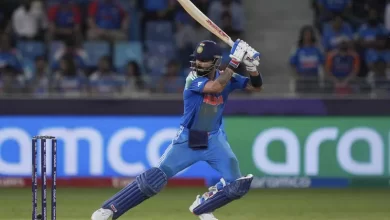Has it become easier to chase down stiff targets in Test cricket?

Twice in two Tests in the current series against New Zealand, England were set challenging fourth-innings targets to chase down: 277 at Lord’s, and 299 at Trent Bridge. On each occasion they had a centurion – a serene Joe Root at Lord’s and scintillating Jonny Bairstow at Trent Bridge – as they romped home with plenty (five wickets) to spare.
Add South Africa’s feats against India earlier this year, when they chased down 240 in Johannesburg and 212 in Cape Town, and there have been four significant fourth-innings batting performances in less than six months in 2022. And we haven’t even mentioned Pakistan’s epic-fourth innings response to a target of 506 in Karachi three months ago, when they gave Australia an almighty scare before finally settling for a draw with a score of 443 for 7.
Four successful run-chases in a relatively short timespan give rise to a few questions: are these targets being hunted down more often now than in the past? Has fourth-innings batting generally become easier over the last few years? Let the numbers tell the story.

To start with, there have only been four other years when 200-plus targets have been chased down more often: five times in 2006, six times each in 1998 and 2003, and seven times in 2008. With half a year to go, 2022 has a decent chance of challenging that all-time record. Since the start of 2019, there have been 12 successful 200-plus chases; in the six-year period from 2013 to 2018, it had only happened seven times.

However, these fourth-innings wins only highlight the success stories, without looking at the number of opportunities teams have had to chase such targets. To know the success rate in these situations, you’d also have to know the number of times teams have been set such targets, in the last few years and earlier.
In 2022, there have been 14 instances when teams have been asked to chase 200 or more; the targets have ranged from 212, for South Africa against India in Cape Town, to 506 for Pakistan against Australia. As mentioned earlier, four of those chases have been successful, six have ended in defeats, and the remaining four have been draws. Four out of 14 gives a success percentage of 28.6. That is a huge improvement from 2021 (three out of 24) and from 2018 (zero out of 29).
In 2008, teams averaged 37.37 in the fourth innings compared to 33.64 in the other three. As mentioned earlier, that was also the year of a record seven instances of 200-plus targets being chased down. That includes South Africa’s 414 for 4 in Perth, and India’s 387 for 4 against England in Chennai. In fact, six of the seven chases that year were of 250-plus targets. Since 1960, there have only been 55 successful chases of 250-plus targets, of which almost 11% happened in one year. Given those stunning numbers, it’s hardly surprising that the overall fourth-innings average was so high that year.
In fact, the six-year period between 2003 and 2008 was a particularly good one for fourth-innings batting: of the 24 successful chases of 200-plus targets in that period, 15 were in excess of 249. (That’s 27% of the total such chases since 1960.) In 2007, too, the fourth-innings average exceeded that of the first three innings, while the ratios were very close to 1 in 2003 and 2006. Overall, in those six years, the runs per wicket in the fourth innings was 32.97, and in the first three innings it was 35.14, a ratio of 0.94. The outlier in that period was 2005, when the ratio dropped to 0.78.
The decade of the 2000s was generally an excellent one for batters – pitches were, relatively speaking, flat the world over; bowling attacks were thin; and that is also reflected in the fact that even stiff fourth-innings targets didn’t faze batting teams.







